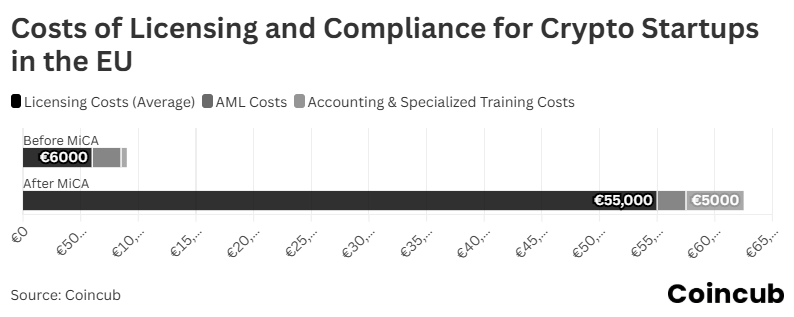How to Start a Crypto Business: A Comprehensive Guide
The cryptocurrency market has transformed a lot over the past decade, going from an experimental technology to a recognized component of the global financial system. This presents an opportunity for entrepreneurs to establish businesses that use blockchain technology and digital assets. Now is an ideal time to enter the crypto space, as increasing mainstream adoption and regulatory frameworks are making way for innovative financial solutions.
In this article, we will guide you through every essential step to launching a successful crypto business. Each section aims to provide clear, actionable insights, enabling you to build a foundation for your venture in the rapidly evolving crypto industry.
Understanding the Crypto Business Landscape
What is a Crypto Business?
A crypto business utilizes blockchain technology and digital currencies to offer financial or digital services. The most common types include but not limited to:
- Cryptocurrency Exchanges: These platforms allow users to trade various cryptocurrencies. They handle order matching, liquidity management, and transaction processing.
- Crypto Wallets: These solutions enable secure storage, transfer, and receipt of digital assets. They vary between custodial and non-custodial options based on the level of control provided to the user.
- Mining Operations: Mining businesses deploy specialized hardware to validate blockchain transactions and create new digital coins. They can range from small-scale operations to large mining farms.
- Payment Processors: These companies facilitate the acceptance of cryptocurrencies as payment, converting digital assets into fiat currency if needed, and ensuring secure, efficient transactions.
- Decentralized Applications (dApps) and DeFi Platforms: These ventures offer services such as lending, borrowing, and yield farming without intermediaries, using smart contracts to automate processes.
- Consulting Services: These firms provide expertise on cryptocurrency strategy, regulatory compliance, and blockchain integration to other businesses and investors.
Market Trends & Growth
The crypto market has experienced growth over recent years due to increased adoption and technological advancements. Global awareness has risen as institutional investors, corporations, and individual users recognize the value of digital assets. Market statistics indicate that a significant percentage of the population now holds cryptocurrency (projected to 10% of global population to hold crypto in 2025), and the number of active blockchain projects continues to climb.
Emerging opportunities in decentralized finance, AI, and blockchain-based applications show a shift toward broader acceptance and innovative use cases. The market could go on for continued expansion, providing a fertile ground for new business ventures.
Benefits & Challenges
Entering the crypto market presents a set of clear benefits alongside notable challenges:
| Benefits | Challenges |
| Innovation Potential: Crypto businesses can leverage groundbreaking technology to disrupt traditional financial models. | Regulatory Uncertainty: Navigating the evolving legal landscape requires careful planning and adherence to international and local regulations. |
| Global Reach: Digital assets and blockchain technology are not confined by geographical boundaries, allowing businesses to target a worldwide audience. | Security Concerns: The digital nature of cryptocurrencies necessitates cybersecurity measures to protect against fraud and hacking. |
| Cost Efficiency: Operating primarily online reduces the need for physical infrastructure, potentially lowering operational costs. | Market Volatility: Price fluctuations in digital assets can affect business stability and profitability. |
| Scalability: Successful digital platforms can rapidly expand their user base and service offerings as the market grows. | Technical Complexity: Building and maintaining a secure and efficient blockchain platform demands significant technical expertise and ongoing development efforts. |
Pre-Launch Research and Strategic Planning
Market Research
Market research is the starting point for any business and involves gathering data about competitors and potential customers. Begin by conducting a competitive analysis using quantitative and qualitative methods. SWOT (Strengths, Weaknesses, Opportunities, Threats) analysis helps evaluate where competitors stand, what gaps exist in the market, and how your offering can address those gaps. Analyze competitors’ service offerings, pricing structures, and customer feedback across various platforms, including industry reports, social media, and online forums.
Identifying target audiences is equally important. Use demographic data, customer surveys, and analytics tools to understand the behavior and preferences of potential users. Determine which customer segments are most likely to benefit from your product or service. Consider factors such as age, geographic location, technical expertise, and financial behavior. This information will help tailor your marketing strategies and product features to meet the specific needs of your audience.
Business Model Development
Once market data is collected, the next step is to define a business model. Start by crafting a clear customer value proposition that identifies the unique benefits your crypto business will provide.
Develop a profit formula by determining revenue streams and cost structures. Consider various monetization strategies such as transaction fees, subscription models, or licensing fees. Clearly define the key resources required to support your business model, which might include technical infrastructure, regulatory compliance mechanisms, and strategic partnerships.
Defining key processes is also crucial. Map out the operational workflow, from customer onboarding and transaction processing to security protocols and customer support. Identify any potential bottlenecks and plan how to address them to ensure a smooth user experience.
Niche Identification
The crypto industry encompasses a broad spectrum of services, making niche identification key to success. Evaluate the different segments available, such as cryptocurrency exchanges, digital wallets, mining operations, payment processors, DeFi platforms, gaming, dApps, consulting services, etc. Assess each segment based on factors like market size, competition level, regulatory environment, and required technological expertise.
Identify a niche where your strengths and market opportunities align. Consider the specific needs of the target audience and the competitive landscape. For instance, if there is a growing demand for secure digital wallets in a region with increasing crypto adoption, this could be a promising area.
Such an approach allows you to concentrate resources on developing specialized capabilities, enabling you to build a reputation as a subject-matter expert. It also simplifies your marketing strategy by narrowing down the audience you need to reach, making your value proposition clearer and more compelling.
Legal, Regulatory, and Compliance Considerations
Legal Structures
Choosing the right legal structure is critical for managing liability, taxation, and operational governance. Common structures include Limited Liability Companies (LLCs), C-Corporations (C-Corps), Decentralized Autonomous Organizations (DAOs), etc. LLCs offer flexibility and pass-through taxation, making them suitable for smaller ventures or businesses seeking fewer administrative burdens. Other structures could provide a framework for raising capital, though they require adherence to more complex regulatory requirements. DAOs, a relatively new legal construct, operate on blockchain technology with decentralized governance, offering a model that aligns with the principles of the crypto ecosystem. However, the legal framework for DAOs is still evolving, and potential legal uncertainties must be carefully evaluated.
Regulatory Frameworks
Crypto businesses operate in a complex regulatory environment. Regulations vary significantly by region and often include guidelines on licensing, financial reporting, and consumer protection. In the United States, agencies such as the Securities and Exchange Commission (SEC) and the Commodity Futures Trading Commission (CFTC) play key roles, while the European Union introduced frameworks like the Markets in Crypto-Assets (MiCA) regulation. Other jurisdictions offer more favorable regulatory climates to attract crypto innovation.
Compliance Measures
Effective compliance measures safeguard a crypto business against legal and operational risks. Data protection is paramount; businesses must implement encryption protocols and data security measures to protect user information and digital assets. Adopting Know Your Customer (KYC) processes is essential to verify the identities of users and to prevent fraudulent activities. In addition, adherence to Anti-Money Laundering (AML) guidelines is mandatory, involving the monitoring of transactions and reporting of suspicious activities to the appropriate authorities. Cybersecurity is a continuous concern, requiring regular audits, penetration testing, and the implementation of best practices to defend against evolving threats. Developing internal policies and procedures that cover these areas is also important. Training employees to recognize potential security breaches and ensuring that third-party service providers meet the same standards improve the business’s compliance framework. Establishing a compliance function within the organization can help in maintaining adherence to both current regulations and best practices.
Business Model & Financial Planning
Revenue Streams
Crypto businesses can generate income through multiple channels. Trading fees are a primary revenue source for cryptocurrency exchanges, with fees charged per transaction or as a percentage of trading volume. Subscriptions and membership models offer recurring revenue for platforms that provide premium features, advanced analytics, or exclusive content. Transaction fees, applied to transfers or conversions between cryptocurrencies and fiat, represent another common method. Additional revenue may come from listing fees, where new tokens or coins pay to be included on a platform, and from commissions on lending or borrowing activities in decentralized finance (DeFi) platforms. Licensing proprietary technology or offering white-label solutions to other companies can also diversify income streams. Each revenue model must be evaluated based on market demand, competitive positioning, and operational feasibility.
Cost Analysis
A comprehensive cost analysis is essential for planning and sustainability. Initial costs often include software development and integration, which encompass building the core platform, user interface design, and backend infrastructure. Security is another significant expenditure; measures, such as encryption, multi-factor authentication, and regular audits, are required to safeguard digital assets and user data. Compliance costs include legal consultation, licensing fees, and the development of processes to adhere to regulatory standards, such as Know Your Customer (KYC) and Anti-Money Laundering (AML) guidelines (these have increased in Europe post-MiCA).
Ongoing costs cover server maintenance, software updates, and continued security monitoring, along with customer support and marketing expenses. In addition, human resources costs, including salaries for technical staff, compliance officers, and management, must be considered. Forecasting these expenses accurately helps in creating a realistic budget and ensures that sufficient capital is allocated for both the launch and sustained operation of the business.
Funding Options
Crypto startups have access to a range of funding options. Traditional sources such as venture capital (VC) firms and angel investors remain viable, especially for businesses with a clear roadmap and scalable technology. These investors typically provide capital in exchange for equity and can offer strategic guidance alongside funding. In contrast, crypto-specific funding methods have emerged, including Initial Coin Offerings (ICOs). ICOs allow businesses to raise funds by issuing tokens to investors, offering an alternative to traditional equity financing. Each funding option carries its own regulatory requirements and investor expectations. Entrepreneurs should weigh the benefits and risks, considering factors such as investor alignment, market conditions, and the potential impact on business control.
Here are top 20 VCs in crypto according to Crypto Rank:
Technical Infrastructure and Security
When establishing a crypto business, selecting the right technology and ensuring security are essential. You must decide between developing a custom solution or opting for a white-label platform. A custom platform offers complete control over your tech stack and allows for tailored features that meet your specific business needs. However, it demands investment in development resources and time. Conversely, white-label solutions provide market-tested systems that can be rebranded and moderately customized, thereby reducing time-to-market and lowering initial technical barriers. The decision process should involve evaluating blockchain platforms based on transaction speed, scalability, and support for smart contracts. Integration with existing systems and compatibility with future upgrades are important criteria. Building your tech stack means choosing suitable programming languages, database systems, and middleware solutions to support current operations as well as future enhancements.
Security is a central concern given the sensitive nature of digital assets and user data. Implement multi-factor authentication, especially two-factor authentication (2FA), to secure user accounts. Use robust encryption protocols for data at rest and in transit, relying on industry-standard algorithms. Regular security audits, including penetration testing and thorough code reviews, are essential to identify vulnerabilities and address them promptly. In addition, continuous monitoring of network activity and real-time threat detection systems can mitigate the risk of cyber attacks. Establish strict access controls and authentication protocols for both internal systems and third-party integrations to minimize the risk of unauthorized access and data breaches.
Planning for scalability is equally important. The infrastructure must be designed to handle rapid growth and fluctuating demand without performance degradation. Choose blockchain platforms and network protocols that can support increased transaction volumes. Consider adopting a modular system architecture where components can be updated independently. Implement scalable database solutions and utilize load balancing across multiple servers to maintain system reliability during peak times. Cloud-based hosting services may offer the flexibility to adjust resources as demand changes. Regular performance reviews, capacity planning, and strategic technology investments are necessary to ensure that the platform remains responsive and secure as user numbers and transaction volumes grow.
Building and Launching Your Product
Developing and launching your product involves creating a Minimum Viable Product (MVP) and refining it through user experience design and beta testing. An MVP allows you to launch a basic version of your product with core functionalities, serving as a test of your business concept while using minimal resources. Start by identifying essential features that solve the primary problem your product targets. Prioritize these functionalities and establish a clear roadmap with defined development milestones. Once the MVP is built, implement metrics to measure user engagement and transaction volumes. This initial data helps determine if the product meets market demands and highlights areas for improvement. Validating your MVP with a small group of target users is critical in identifying technical issues and potential enhancements before a full-scale launch.
User experience (UX) and interface design play a significant role in attracting and retaining customers. Begin the design process with wireframes and prototypes to visualize user flow and interface layout. Early usability tests provide valuable feedback, allowing you to refine navigation and ensure that each function is easily accessible. It is important to incorporate accessibility standards so that the product is usable by a diverse audience. A clear and intuitive interface reduces user effort and minimizes errors during key interactions such as account registration and transactions. Striking the right balance between functionality and simplicity results in a product that not only meets user needs but also encourages ongoing engagement.
Beta testing is the next step before a full-scale launch. Identify a group of early adopters who represent your target market to test the product in a controlled environment. Define specific objectives for beta testing, including assessing functionality, performance, and overall user experience. Use surveys, interviews, and analytics tools to gather both quantitative and qualitative feedback. Focus on identifying bugs, evaluating user behavior, and verifying the effectiveness of core features. Analyze feedback to detect common issues and prioritize them based on impact and ease of resolution. Implement changes incrementally and consider additional beta rounds if significant modifications are required.
Marketing Strategy and Community Engagement
A well-defined marketing strategy and strong community engagement are crucial for building a sustainable crypto business. Start with branding and positioning by developing a clear brand identity that sets you apart from competitors. Define your value proposition, mission, and positioning statements in a way that communicates the specific benefits your platform offers and the problems it solves. Ensure that the visual elements of your brand, such as the logo, color scheme, and typography, are consistent across all communication channels. This consistency builds credibility and trust among your target audience.
Digital marketing techniques are key to increasing your business’s visibility and driving user engagement. Employ Search Engine Optimization (SEO) strategies by optimizing on-page elements like meta tags, headers, and content, and by building high-quality backlinks. Content marketing is effective for educating your audience; consider producing blog posts, whitepapers, and tutorials that address common questions and industry challenges. Social media platforms offer avenues for both marketing and community interaction. Establish profiles on channels popular with your target audience and maintain a regular posting schedule that includes product updates, industry news, and educational content. Pay-Per-Click (PPC) advertising can also be leveraged to target potential users, and using data analytics to monitor campaign performance enables you to adjust your strategies as needed.
Building a strong community is essential for long-term growth. Establish a comprehensive customer support framework that offers multiple channels, such as email, live chat, and dedicated forums. Prompt and effective communication builds trust and addresses user concerns quickly. Providing educational resources such as tutorials, webinars, and FAQs can help users navigate your product and better understand the crypto market. Engage with your audience through social media and online communities like forums, Telegram groups, or Discord channels. Regular Q&A sessions or virtual meetups strengthen relationships with your user base. A structured feedback program can also help in continuously refining your product based on community insights.
Post-Launch and Scaling Strategies
After launching your product, ongoing performance monitoring and scaling strategies are critical to maintaining success and fostering growth. Implement analytics platforms and performance dashboards to track key performance indicators (KPIs) such as user engagement, transaction volumes, customer retention, and system uptime. Regularly review both technical performance and customer feedback to identify issues and adjust strategies accordingly. Analyzing trends over time provides insights into user behavior and market responses, which are vital for continuous improvement.
Scaling operations involves expanding the team, upgrading technology infrastructure, and broadening marketing efforts. Focus on hiring skilled professionals in areas like software development, cybersecurity, compliance, and customer support to handle increased workload and maintain service quality. On the technical side, adopt scalable solutions such as cloud services, distributed databases, and modular architectures to support growing user demand. Conduct regular capacity planning and performance stress tests to determine when infrastructure upgrades are necessary. Parallel to technological improvements, scale your marketing efforts by increasing digital campaign budgets and diversifying marketing channels to reach broader audiences.
Adaptability remains a key factor in the crypto market. Establish agile processes that allow your business to quickly respond to changes in technology and regulatory requirements. Continuous training and learning programs for your team ensure they stay informed about industry developments and cybersecurity threats. Maintain a flexible product roadmap that incorporates iterative updates based on user feedback and emerging trends. Regular cross-functional review meetings can facilitate discussions on new challenges and opportunities. Additionally, strategic partnerships with technology providers, regulatory experts, and industry groups can provide valuable insights and support as you navigate market shifts. Partnerships could be for something unrelated to your product and still provide benefits. For instance, Crypto.com is partnered with F1, which provides huge exposure to the former to a certain demographic.
Conclusion
Launching a crypto business involves thorough pre-launch research, strategic planning, and careful execution. From understanding market trends and defining your niche, to developing a clear business model, addressing legal and compliance requirements, and selecting the right technology, each step lays the groundwork for a sustainable venture. Post-launch, continuous performance monitoring and scalable operational strategies are critical for adapting to market dynamics.
Looking ahead, the crypto space will continue to change as regulations change. Staying informed and agile will be key to leveraging new opportunities as the market matures.








